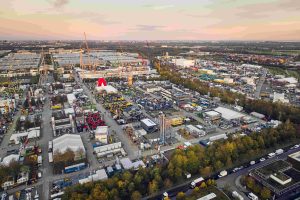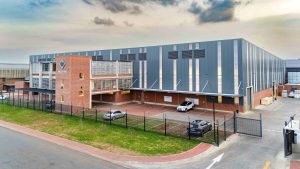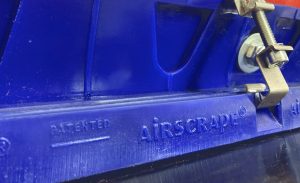Becker Mining has introduced its upgraded BRS-2 Belt-rip detection system, which further enhances the productivity and safety of conveyor belts by detecting longitudinal rips as soon as they occur.
“The advanced belt rip detection BRS-2 system is used to detect longitudinal rips on steel cable and fibre conveyor belts used in diverse industries, including mining and quarrying, manufacturing, food and beverage conveying, packaging and general conveying,” explains Rick Jacobs, senior GM for Consumables, Becker Mining South Africa.
“The BRS-2 system, which utilises inductive loops that are embedded in the belt, uses real time diagnostics to continuously monitor the status of the belt. In the event of a rip, the system stops the belt drives, which reduces any further damage and minimises downtime.
“Apart from the detection of belt rips, this system is designed for monitoring belt speed, the detection of belt slip and also for belt sequence control.”
Once installed, the BRS-2 system will run a learning cycle, with the processor of the belt rip detection system unit (BRS/CU) storing the necessary data. The BRS-2 will detect the loops on the conveyor, define and number the loops and create its own virtual image of the belt and its loops in real time. Stored values are protected against power loss and can be entered or changed when necessary.
When the belt is in operation, these inductive loops pass over the transmitter and receiver, which are positioned opposite each other on either side of the belt. An electro-magnetic signal is transmitted via the inductance loop from the transmitter into the receiver. Because this system has recorded the distance between successive loops and belt velocity, it can automatically calculate the time intervals between each loop.
The loop that is embedded in the belt operates like an antenna between the transmitter and receiver of the belt rip scanner sensor interface (BRS/SI).
Based on the value communicated to the receiver from the transmitter (once a loop has passed over them) the BRS-2 will either issue a warning notification or, in the event of a very low or no signal at all – which indicates a ripped belt – the system will issue a command to stop the belt.
Access and monitoring of the system is simple – either locally with its 12” TFT screen, five shortcut buttons, a mouse pad and virtual keypad, or remotely via TCP/IP or other bus standards.
Detailed information – which can be seen in real time – includes loop position, loop status and the status of a particular loop over the last ten revolutions. Other features include accurate belt speed, real time diagnostics, forward and reverse capability, local and remote password protection, system log of the last 10 000 system changes.
This advanced belt rip detection system, which can withstand operation in arduous conditions, has a robust stainless steel housing, with an IP65 index protection rating to guard against the ingress of dust and water. This device is also available as an Intrinsically Safe (IS) model to ensure safe operation in hazardous areas.
The BRS-2 system enhances Becker Mining South Africa’s extensive range of reliable inter-operable communications, automation and safety systems. These systems include distributed antenna configurations, leaky feeder communications and industrial Wi-Fi systems, as well as tagging and tracking systems, real-time location solutions, traffic information and control systems. Becker Mining also offers remote evacuation signalling systems, environmental monitoring equipment and terrestrial radio and data equipment.






